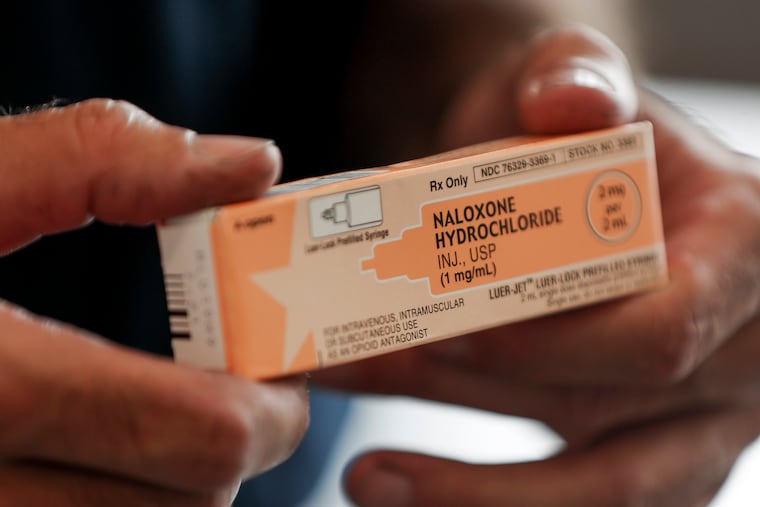More than half of Pa. school nurses stock the overdose reversal drug naloxone, Penn study finds
District officials' reluctance remains a stumbling block to stocking the life-saving medication.

A new survey of Pennsylvania school nurses has found that while many schools do keep a supply of naloxone on hand, barriers like education officials’ reluctance are still keeping the opioid overdose reversal medication out of some schools.
The study conducted by University of Pennsylvania School of Nursing researchers found that more than half — nearly 54% — of the 362 school nurses included in the results reported having naloxone at their schools.
Of the nurses who said their schools kept naloxone on hand, over 5% reported having had to administer it at their school or at a school-sponsored activity. The survey didn’t collect details on the recipients of the lifesaving drug, like their ages and whether they were students, staff, or parents.
According to the study article, which was published Monday in the journal Public Health Nursing, 2016 federal data found that 3.6% of students ages 12 to 17 reported having misused opioids in the last year.
The Penn researchers, who intended their study as a first look at the presence of naloxone in the commonwealth’s schools, noted some unexpected findings.
“I think the data showing that over half the nurses are reporting having naloxone was a little surprising to us,” said lead study investigator Catherine C. McDonald, Penn assistant professor of nursing. “I didn’t anticipate it would be that high, although it also indicates we could do better to get to a higher number.”
The results of the online survey represent schools in 56 of Pennsylvania’s 67 counties. There was at least one school nurse from all 19 urban counties, and 37 of the 48 rural counties. The survey was posted to the Pennsylvania Association of School Nurses and Practitioners websites. Participation was voluntary.
» READ MORE: Overdose reversal is just the start in fighting the opioid epidemic
The study’s result also shed light on some of the barriers to having naloxone available in the schools.
Of the nurses who reported not having a supply of the overdose reversal medication in their schools, the two biggest reasons were lack of school board support — at nearly 27% — and lack of administration support, close to 25%. Not believing it was needed and lack of funds were also noted.
Among the least-cited barriers were lack of support by staff, parent, or the community.
“Our survey results show that barriers, particularly those related to lack of support or beliefs that naloxone is not needed in a community, need to be addressed,” McDonald said. “School nurses are in a position as both health educators and emergency responders regarding opioid overdose and may be an untapped resource to spread the adoption of community access to naloxone through normative behavior.”
» READ MORE: There's a black market of addiction treatment medication
Pennsylvania has one of the highest opioid overdose death rates in the United States, and Philadelphia has the highest rate of the nation’s large cities.
The National Association of School Nurses has endorsed naloxone in schools as a safe and effective means of opioid overdose reversal.
The Penn study notes that school nurses are equipped for medical emergencies with lifesaving tools like automated external defibrillators and epinephrine pens for anaphylaxis.
“Maintaining a supply of naloxone is another form of emergency preparedness,” the study article states.